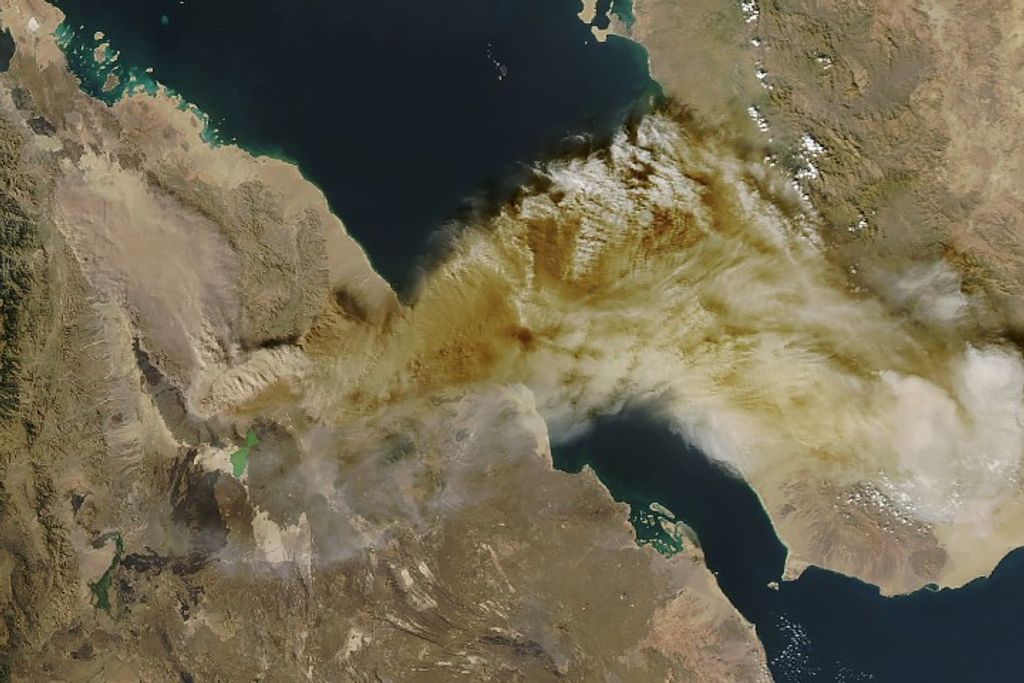1 min read
Stellar Sorting in Globular Cluster 47 Tucanae

NASA's Hubble Space Telescope has provided astronomers with the best observational evidence to date that globular clusters sort out stars according to their mass, governed by a gravitational billiard ball game between stars. Heavier stars slow down and sink to the cluster's core, while lighter stars pick up speed and move across the cluster to its periphery.
[Left] - A photo of the globular star cluster 47 Tucanae taken with the Very Large Telescope in Chile. It is one of the densest globular clusters in the Southern Hemisphere. The cluster contains 1 million stars.
[Right] - A NASA Hubble Space Telescope color photo of the core of 47 Tucanae. Multiple photos of this region allowed astronomers to track the "behive swarm" motion of stars. Precise velocities were obtained for nearly 15,000 stars in this cluster. This image was taken with Hubble's Advanced Camera for Surveys.
The international science team was made of the following scientists: D.E. McLaughlin (University of Leicester), J. Anderson (Rice University), G. Meylan (Ecole Polytechnique Federale de Lausanne), K. Gebhardt (University of Texas at Austin), C. Pryor (Rutgers University), D. Minniti (Pontifica Universidad Catolica), and S. Phinney (Caltech).
About the Object
- R.A. PositionR.A. PositionRight ascension – analogous to longitude – is one component of an object's position.00h 24m 5.67s
- Dec. PositionDec. PositionDeclination – analogous to latitude – is one component of an object's position.-72° 4' 52.59"
- ConstellationConstellationOne of 88 recognized regions of the celestial sphere in which the object appears.Tucana
- DistanceDistanceThe physical distance from Earth to the astronomical object. Distances within our solar system are usually measured in Astronomical Units (AU). Distances between stars are usually measured in light-years. Interstellar distances can also be measured in parsecs.This obejct is roughly 15,000 light-years (4,600 parsecs) away.
- DimensionsDimensionsThe physical size of the object or the apparent angle it subtends on the sky.1 arcminute (4.6 light-years or 1.4 parsecs) wide (right)
About the Data
- Data DescriptionData DescriptionProposal: A description of the observations, their scientific justification, and the links to the data available in the science archive.
Science Team: The astronomers who planned the observations and analyzed the data. "PI" refers to the Principal Investigator.The Hubble image was created from data from the following proposals: 5912, 6467, and 7503: G. Meylan (Ecole Polytechnique Federale de Lausanne), D. Minniti (Universidad Catolica de Chile), S. Phinney (California Institute of Technology), C. Pryor (Rutgers University), B. Sams (Mediateam, Germany), and C. Tinney (Anglo-Australian Observatory) 8267: R. Gilliland (STScI), D. Naef (Observatoire de Geneve), A. Sarajedini (University of Florida), S. Sigurdsson (Pennsylvania State University), D. VandenBerg (University of Victoria), T. Brown (University Corporation For Atmospheric Research), A. Burrows (University of Arizona), W. Cochran (University of Texas, Austin), P. Edmonds (Harvard University), S. Frandsen (Aarhus University), S. Vogt, P. GuhaThakurta, and D. Lin (University of California, Santa Cruz), G. Marcy (University of California, Berkeley), M. Mayor (Observatoire de Geneve), and E. Milone (University of Calgary) 9019: R. Bohlin (STScI), G. De Marchi (ESA/STScI), and R. Gilliland (STScI) 9266: R. Gilliland, K. Sahu, and P. Goudfrooij (STScI) 9028: G. Meurer and H. Tran (Johns Hopkins University) 9443: I. King (University of Washington) and J. Anderson (Rice University) The international team was made of the following scientists: D.E. McLaughlin (University of Leicester), J. Anderson (Rice University), G. Meylan (Ecole Polytechnique Federale de Lausanne), K. Gebhardt (University of Texas, Austin), C. Pryor (Rutgers University), D. Minniti (Pontifica Universidad Catolica), and S. Phinney (Caltech). - InstrumentInstrumentThe science instrument used to produce the data.ESO>VLT (left); HST>WFPC2, HST>ACS/WFC, and HST>ACS/HRC (right)
- Exposure DatesExposure DatesThe date(s) that the telescope made its observations and the total exposure time.October 1995, November 1997, July 1999, October 1999, July 2001, April 2002, and July 2002 (right)
- FiltersFiltersThe camera filters that were used in the science observations.Hubble data: F300W (Wide U), F336W (U), F475W (SDSS g) For image: F475W (SDSS g), F555W (V), and F814W (I)
- Object NameObject NameA name or catalog number that astronomers use to identify an astronomical object.47 Tucanae, NGC 104
- Object DescriptionObject DescriptionThe type of astronomical object.Globular Cluster
- Release DateOctober 24, 2006
- Science ReleaseHubble Yields Direct Proof of Stellar Sorting in a Globular Cluster
- Credit

The Hubble image is a composite of many separate exposures made by the ACS instrument on the Hubble Space Telescope using three different filters to sample broad wavelength ranges. The color results from assigning different hues (colors) to each monochromatic image. In this case, the assigned colors are: Blue: F475W (SDSS g) Green: F555W (V) Red: F814W (I)

Share
Details
Claire Andreoli
NASA’s Goddard Space Flight Center
Greenbelt, Maryland
claire.andreoli@nasa.gov

































